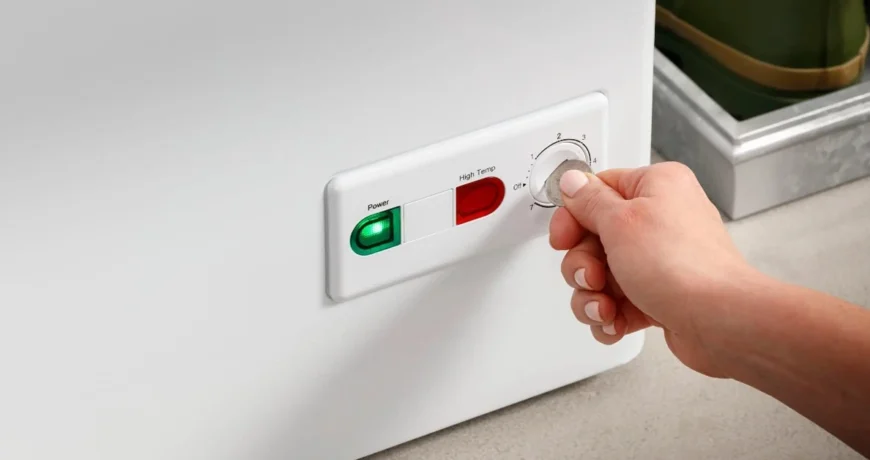How to Change the Temperature of a Deep Freezer Leave a comment
When we talk about a deep freezer, we mean both the upright and chest types. Unlike fridge-freezer combos, deep freezers are just for freezing food. Even though, combo units can work well at the right freezer temperature. It’s super important to figure out the best temperature for your deep freezer. This helps keep your food safe and in good condition. In this blog, we’ll talk about a few things to consider and the perfect temperature for your deep freezer.
Find the Temperature Control
Start by searching for the dial or knob that’s like the boss of your freezer’s temperature. It could be outside or on the front, inside where you keep your frozen things. Some freezers show numbers on a screen, while others just have a turning knob. Those numbers or the screen tell you how cold it is inside. It’s like finding the remote control for your freezer’s coldness!
Recognize the Settings
Spend some time determining the meaning of the dial’s numbers. Typically, they range from 1 to 9. Imagine that 1 represents a mildly chilly day and 9 represents the middle of winter—that is, really cold! Examine the instruction manual that came with the freezer if you’re unsure. It serves as a manual of sorts explaining how to utilize it. learning how to adjust these settings is similar to learning how to maintain the ideal temperature for your frozen items.
Choose the Temperature You Want
Consider the items you keep in the freezer. Certain things could need to be at different temperatures. A setting of 4 to 6 is frequently adequate for general frozen food storage. But, you might use a cooler temperature, like 7 or 8, if you’re storing ice cream or other goods that need to be especially frozen.
Modify the Temperature
This step is like turning a knob to set how cold you want your freezer. If your freezer has buttons or a screen, you can use those to pick the right level. But here’s the trick: it won’t instantly get super cold. It might take a few hours for it to settle and be as cold as you want.
Monitor and Fine-Tune
You must continue to monitor the temperature once it has been set. Consider it similar to checking the weather, just with your freezer! Check to see whether it’s as chilly as you set it with a basic thermometer, similar to the ones in your kitchen. If it’s not ideal, you can adjust it little by little until it is; this is similar to tuning a guitar to produce the ideal tone.
Tips for Optimal Freezer Performance
Don’t Overcrowd: Give your freezer some room. When shelves are too full, air can’t move around, making the cooling uneven. To prevent surprises like too much ice and make sure everything stays frozen right, arrange your items, so air can flow freely.
Frequent Defrosting: Defrost your freezer every so often if ice builds up. This helps your freezer work better, avoids too much ice, and saves electricity.
Verify the Seal: Make sure the seal on your freezer door is tight. A tight seal helps keep the freezer operating at its best by preventing warm air from coming in and preventing cold air leaks.
Conclusion
If you follow these instructions, controlling the temperature in your deep freezer is a simple operation. It’s important to know how to operate the temperature control dial and digital display on your freezer. Your frozen goods will be stored in the best possible conditions if you keep an eye on the temperature and make any necessary modifications on a regular basis. By doing this, you can rely on your deep freezer to save the day when it comes to maintaining the safety and quality of your frozen foods.
 0321-4978901
0321-4978901


